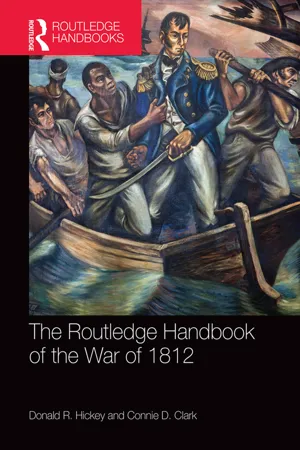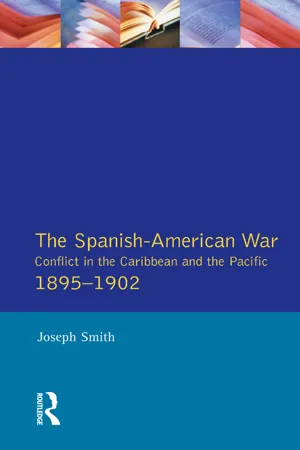History
Treaty of Paris 1783
The Treaty of Paris 1783 marked the end of the American Revolutionary War and established the United States as an independent and sovereign nation. Signed by representatives of Great Britain and the United States, the treaty outlined the boundaries of the new nation and addressed issues related to debts and property. This pivotal agreement laid the foundation for diplomatic relations between the two countries.
Written by Perlego with AI-assistance
Related key terms
3 Key excerpts on "Treaty of Paris 1783"
- eBook - ePub
- Donald R. Hickey, Connie D. Clark(Authors)
- 2015(Publication Date)
- Routledge(Publisher)
status ante bellum . Actually it did a bit more than that, but more importantly, three of the commissioners who negotiated the Treaty of Ghent were in London in the spring of 1815 to negotiate a commercial treaty. For the United States it was Gallatin, J. Q. Adams, and Clay. Sadly, Bayard had taken ill and barely managed to return to his home in Wilmington, Delaware, before dying, aged 48 years. For the British, Goulburn and William Adams were back. Lord Gambier was replaced by a younger man, Frederick John Robinson, who, like Goulburn, would be in high offices off and on for several decades. The six of them worked out another treaty, modestly called the Commercial Convention of 1815. Signed on July 3, it restored peaceful trade between the United States and Great Britain and, interestingly, allowed the United States to trade directly with some English ports in Asia. In April 1817, Richard Rush, acting Secretary of State, negotiated with Sir Charles Bagot, the new British Minister in Washington, an agreement which removed the warships of both the United States and the British Empire from the Great Lakes and Lake Champlain. The U.S. Senate ratified this treaty a year later. Meanwhile John Quincy Adams, after serving as Minister to the Court of St. James as his father had done after the Revolutionary War, returned to the United States to serve as Secretary of State through both administrations of James Monroe. With Adams as Secretary of State and Castlereagh still Secretary for Foreign Affairs, diplomats familiar with the previous negotiations of 1814 and 1815 negotiated the comprehensive Treaty of 1818. They were Albert Gallatin, now our Minister to France; Richard Rush, now Minister to the British; Henry Goulburn; and John Frederick Robinson, now President of the Board of Trade. They made permanent the Commercial Convention of 1815, which was due to expire in 1819. They agreed on a boundary that would extend from the Lake of the Woods to the 49th degree parallel and then extend to the Rocky Mountains. They agreed on an unusual solution to conflicting claims for the Oregon Country: the United States and Great Britain would share it for ten years, and then renegotiate. They formalized an agreement annually renewed since 1815 that permitted New Englanders to fish in British waters and dry their catch on unsettled shores of Labrador and Newfoundland, forever. Finally, they agreed to allow a foreign power to arbitrate the question of slaves who, under the terms of the treaty of Ghent, should have been returned to their masters if residing on occupied territory returned to the United States. Where slaves could not be returned for whatever reason, there should be compensation with cash. Though it took years, this was actually accomplished.Subsequently the British declined to support the severely troubled Spanish government in its efforts to reclaim Louisiana and keep the United States out of Florida. Under these circumstances the Spanish finally surrendered Florida and acknowledged the United States’ title to the Louisiana Territory. The result was the Adams-Onís Treaty (1819–21). In the next few years the United States and Britain would recognize the independence of South American nations that had been Spanish colonies. Both governments had never officially sent aid to the rebellious colonists of Latin America, but many of their citizens—for love of liberty, adventure, or profit—had offered aid and even joined revolutionary wars. Though never bound by a formal alliance, the United States and Great Britain became remarkably friendly so far as commerce, migration, and expansion were concerned. Doing business proved vastly preferable to waging war. After the Treaty of Ghent, Lord Gambier corresponded with Henry Clay, who introduced him to the American Episcopal Bishop Philander Chase. Through Gambier’s connections with the British and Foreign Bible Society and Missionary Society, Chase received financial support for the founding of Kenyon College in Ohio; the village that sprung up around it was appropriately named Gambier. - eBook - ePub
The Spanish-American War 1895-1902
Conflict in the Caribbean and the Pacific
- Joseph Smith(Author)
- 2014(Publication Date)
- Routledge(Publisher)
He considered that further resistance was pointless, and that, ‘in order to avoid greater evils, the painful necessity of submitting to the will of the conqueror becomes imperative’. 24 Montero Ríos announced Almodóvar’s decision to the conference on 28 November. Reid observed that the Spaniards ‘sat in their places with a certain air of mournful dignity’. In his opinion, they were simply submitting ‘to the inevitable’. 25 After additional meetings to clarify various technical points, the peace treaty was finally ready for signature on 10 December. Spain ‘relinquished’ its sovereignty over Cuba, and thereby remained liable for debts contracted before and during the war. It ceded Puerto Rico, Guam and the Philippines to the United States. In return for the Philippines, the United States agreed to pay Spain $20 million. 26 The American peace commissioners had worked long and hard to fulfil the President’s instructions. But the peace process was not yet over. A period of six months was allowed for each government to secure formal ratification of the treaty. According to American law, this meant that the Treaty of Paris had to come before the United States Senate. Ratification of the Treaty of Paris Foreshadowing the role of ‘War President’ that would be assumed by several of his presidential successors in the twentieth century, McKinley used his authority as Commander-in-Chief to direct the prosecution of a foreign war and the negotiation of the peace settlement. The significant expansion of presidential power was summed up by the establishment of a ‘War Room’ in the White House from which radiated numerous telephone and telegraph wires connecting the President with senior government and military personnel. The influence of Congress was consequently diminished, as it assumed a supportive and largely invisible function while the war was in progress. But this was dramatically changed by the conclusion of the peace treaty - eBook - ePub
- Samuel Flagg Bemis(Author)
- 2024(Publication Date)
- Encounter Books(Publisher)
30 and after his own Parliament had overthrown the preceding North Government by publicly declaring that Great Britain would not fight any more for the Colonies, had wriggled out of a bad situation with the loss of only Florida, Minorca, three small islands in America, and some unimportant territory in equatorial Africa. To balance these losses he acquired a valuable new smuggling post in India and a gateway of entrance to the islands and realms of the Far East. Dutch ships still had to salute the British flag as it sailed by. The King of Great Britain continued to call himself King of France. But the American Colonies were gone—gone forever. There was the victory of France and of the United States.During the months of discussion and negotiation which had preceded the final peace settlement both sides had eluded the assiduous efforts of Russia and Austria to mediate. Great Britain feared to commit her interest in any way to Austria, an ally of France, if only nominally; and France herself distrusted the disinterestedness of Austria as a mediator. Both distrusted the stability of Catherine II. The repeated offers of these powers were therefore unacceptable and were politely evaded. But after the belligerents themselves had arranged the terms of their peace without expensive brokers they solemnly accepted the mediation of Austria and Russia. The definitive French and Spanish treaties were signed at Versailles, September 3, 1783, over the names of Austrian and Russian plenipotentiaries, with an explicit if empty statement by each that the treaty was the result of the mediation of his august sovereign.31
Index pages curate the most relevant extracts from our library of academic textbooks. They’ve been created using an in-house natural language model (NLM), each adding context and meaning to key research topics.


